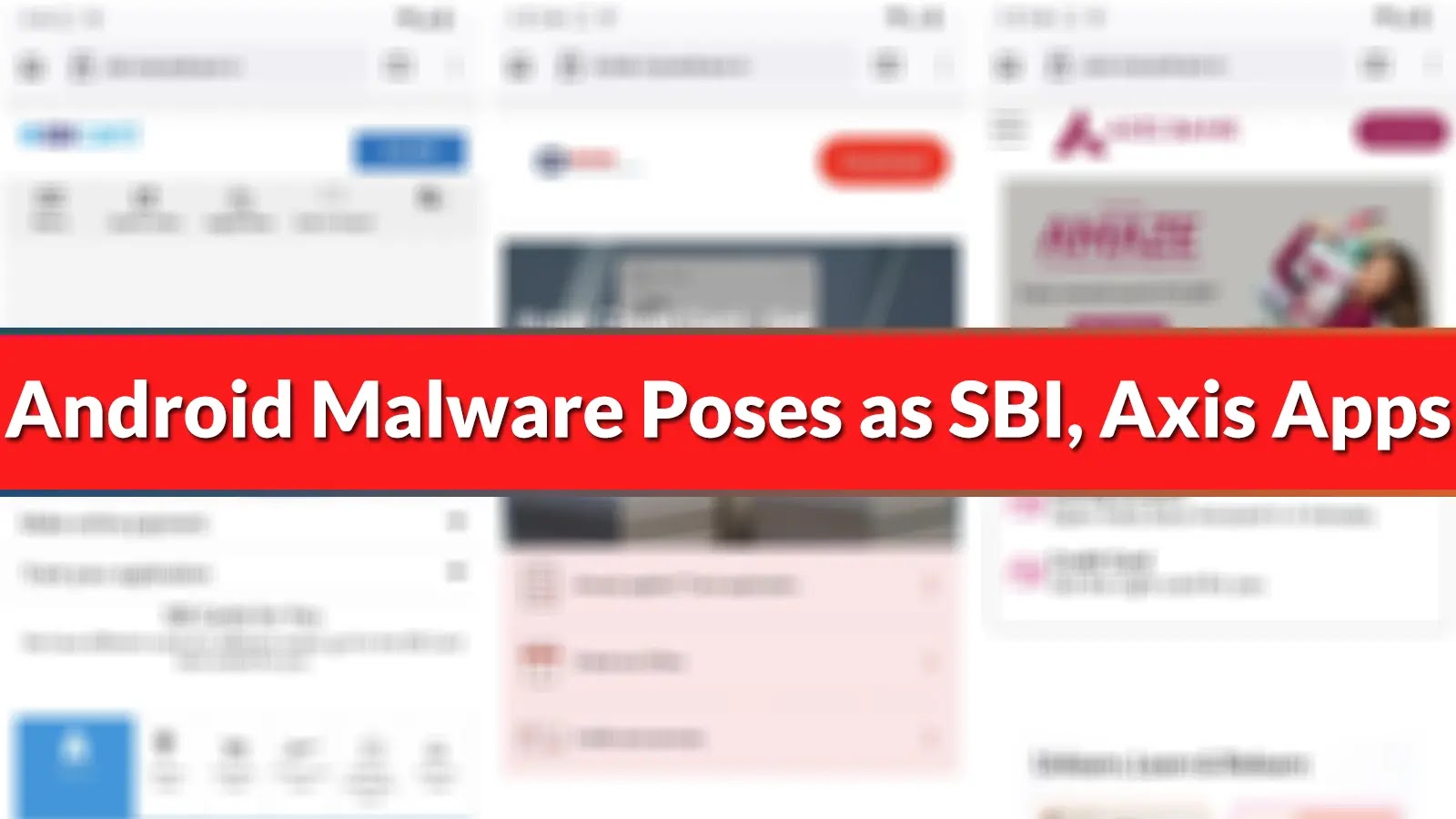
New Android Malware Mimics as SBI Card, Axis Bank Apps to Steal Users Financial Data
Urgent Alert: New Android Malware Poses Severe Risk to Indian Banking Customers
A sophisticated Android malware campaign has emerged, directly threatening the financial security of Indian banking customers. This advanced threat specifically targets users by masquerading as legitimate applications from prominent financial institutions. As cybersecurity analysts, our immediate concern is the ability of this malware to bypass user vigilance and exfiltrate sensitive financial data, leading to potential identity theft and significant financial losses. Understanding its modus operandi and implementing robust protective measures are paramount.
Malware Disguise: Targeting Major Indian Financial Institutions
This latest malware campaign leverages a highly effective social engineering tactic: impersonation. The malicious software convincingly mimics legitimate mobile banking applications from some of India’s largest and most trusted banks. Specifically, the malware has been observed masquerading as apps from:
- SBI Card
- Axis Bank
- Indusind Bank
- ICICI Bank
- Kotak Mahindra Bank
Users, unsuspecting of the deception, are tricked into downloading these fake applications. The initial vector for distribution often involves phishing attempts through SMS, email, or malicious websites, where users are prompted to download an “updated” or “essential” version of their banking app.
Operational Tactic: Deception and Data Exfiltration
Once installed, the malware operates with a clear objective: to steal sensitive financial information. While specific technical details regarding the malware’s full capabilities are still emerging, typical banking Trojans and infostealers leverage a combination of techniques:
- Overlay Attacks: The malware places a fake login screen over legitimate applications, capturing credentials as users attempt to log in.
- SMS Interception: It can intercept one-time passwords (OTPs) and transaction alerts sent via SMS, bypassing two-factor authentication.
- Accessibility Service Abuse: Abusing Android’s Accessibility Services can grant the malware extensive control over the device, allowing it to read screen content, perform gestures, and even initiate transactions.
- Keylogging: Recording keystrokes to capture login details, card numbers, and other sensitive inputs.
- Contact List Exfiltration: Stealing contact information for further phishing or social engineering campaigns.
The success of this malware hinges on its ability to appear legitimate, fostering user trust and enabling unauthorized access to financial data. This campaign highlights the evolving sophistication of mobile malware and the persistent threat it poses to digital economies.
Remediation Actions and Preventative Measures
Protecting against this and similar threats requires a multi-layered approach, combining user awareness with technical safeguards:
- Download Apps Only from Official Sources: Always download or update mobile banking applications exclusively from the Google Play Store or the official App Store. Never click on links in SMS messages or emails purporting to be from your bank requesting app downloads.
- Verify App Authenticity: Before installing any app, check the developer name, the number of downloads, user reviews, and permissions requested. Suspiciously low downloads, generic developer names, or excessive permission requests are red flags.
- Enable Two-Factor Authentication (2FA): Ensure 2FA is enabled on all banking and financial accounts. Even if credentials are stolen, 2FA provides an additional layer of security.
- Review App Permissions: Regularly review permissions granted to installed applications. Be wary of banking apps requesting unnecessary permissions like access to SMS, contacts, or accessibility services.
- Keep Your OS and Apps Updated: Ensure your Android operating system and all applications are kept up to date. Software updates often include crucial security patches that address known vulnerabilities.
- Use Reputable Mobile Security Software: Install and maintain a reputable mobile antivirus or security solution that can detect and prevent malware infections.
- Be Skeptical of Unsolicited Communications: Treat any unsolicited SMS messages or emails, especially those containing links or urgent requests, with extreme caution. If in doubt, contact your bank directly through official channels.
- Monitor Bank Statements: Regularly check your bank and credit card statements for any unauthorized transactions. Report suspicious activity immediately to your financial institution.
Tools for Detection and Prevention
Leveraging appropriate tools can significantly bolster your defense against mobile malware:
| Tool Name | Purpose | Link |
|---|---|---|
| Virustotal | File and URL analysis for malware detection | https://www.virustotal.com/ |
| Malwarebytes Security | Reputable Android antivirus and anti-malware | https://www.malwarebytes.com/mobile |
| Google Play Protect | Built-in Android security (essential first line of defense) | https://www.android.com/play-protect/ |
| NMAP (for network analysis) | Network scanning and security auditing (advanced users for C2 detection) | https://nmap.org/ |
Conclusion: Heightened Vigilance is Key
The emergence of this Android malware campaign targeting Indian banking customers serves as a stark reminder of the persistent and evolving threat landscape in mobile security. Cybercriminals continuously refine their tactics, leveraging social engineering and technical sophistication to exploit vulnerabilities. Effective defense relies on a combination of informed user behavior and the deployment of robust security measures. Staying informed about current threats, exercising caution with unsolicited communications, and adhering to best cybersecurity practices are essential to safeguarding financial data in an increasingly digital world.





